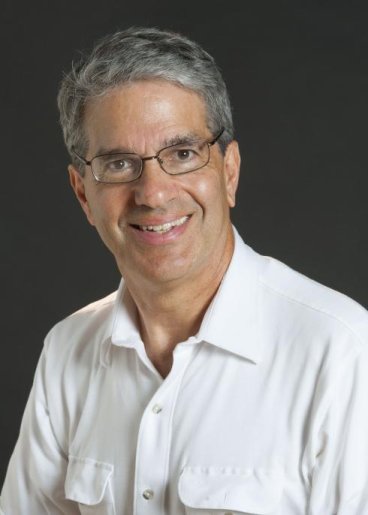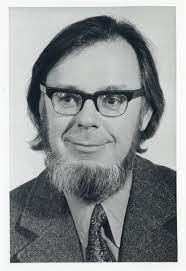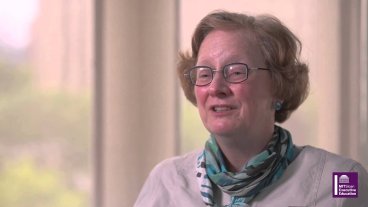The Early History of the History of Computing: An Oral History Project
The first concerted efforts to study the history of computing came in the late 1970s, more than 40 years ago. Some of the main practitioners of that era have died (e.g., I. Bernard Cohen, Bernard Galler, and Henry Tropp), and many of the other participants from that era are at retirement age or a few years beyond. A few of these early participants in the study of the history of computing have already been interviewed, e.g., there are individual interviews of Arthur Norberg, Bernard Galler, and Erwin Tomash in the CBI collections; and there is a relevant interview of Michael Williams in the IEEE Computer Society Presidents oral history collection that is posted on the Engineering and Technology History Wiki. In order to round out the collection of interviews and preserve this history, CBI has embarked on an oral history project on the history of the early history of computing to interview people who were active in the field in the late 1970s or early 1980s.
While these interviews focus on both the careers of these people and the environment of history of computing at that time, the interviews also carry forward through the remainder of these people’s careers. The interviews mostly focus on the formative influences and careers of these individuals, and do not provide full, life-course coverage on topics such as friends, family, hobbies and other outside interests, or volunteer activities. So far, interviews have been conducted with William Aspray, Paul Ceruzzi, James Cortada, Peggy Kidwell, and JoAnne Yates in the United States; and Martin Campbell-Kelly and Brian Randell in the United Kingdom. We might add a few additional interviews from these countries, and possibly also from other countries such as France, Germany, and the Netherlands that had early history of computing efforts.

Smithsonian National Air and Space Museum.
The community of practitioners in the history of computing was much smaller in this early period, possibly two orders of magnitude smaller than the number of people today studying the history of computing, as broadly conceived. Many of the early practitioners were computer scientists such as Bernard Galler, John A.N. Lee, and Jean Sammet in the United States, Brian Randell in the United Kingdom, and Heinz Zemanek in Austria. I. Bernard Cohen was the only major figure from the history of science with an interest in the history of computing then; and it was for him only a secondary interest. This was the time in which the first students began to write doctoral dissertations on related topics: William Aspray, Martin Campbell-Kelly, Paul Ceruzzi, Larry Owens, Hartmut Petzold, and Nancy Stern.
In a later era, the University of Pennsylvania became a hotbed for the production of history of computing scholars (Janet Abbate, Atsushi Akera, Nathan Ensmenger, Thomas Haigh), but in this era there were no places producing very many scholars. These early degrees were awarded in singletons by Wisconsin, Kansas, Princeton, Stony Brook, Open University, and Technical University of Berlin. Early students came to study computing history from a number of other disciplines: history of mathematics, history of physics, business history, English literature, American studies, and computer science.
Not surprisingly, the literature on the history of computing in this period was meager. For books, there was Herman Goldstine’s paean to von Neumann, Brian Randell’s source book on the origins of digital computing, and Jack Howlett and Gian-Carlo Rota’s edited volume of essays from an early conference held at Los Alamos National Laboratory – little else. MIT Press created a series in the history of computing in 1981, and some of the earliest and most important books to appear in this series were the memoirs of Maurice Wilkes and the first of the books in the technical history series produced by IBM. There was the occasional relevant article in Isis, Technology & Culture, Archive for the History of Exact Sciences, Historia Mathematica, and various journals published by the various professional computing societies. It was not, however, until 1979 when the field had its own journal, Annals of the History of Computing.

Professor at the School of Computing,
Newcastle University, Brian Randell.
Venues for presenting papers on the history of computing were similarly limited. There was the occasional relevant session at the History of Science Society Annual meeting. On several occasions, there were sessions on related topics (such as the history of mathematics and history of physics) with mostly the same young scholars: Lorraine Daston, Peggy Kidwell, Joan Richards, and William Aspray. There were also occasional sessions at the Society for History of Technology (SHOT) annual meetings, where computing technologies often shared the program with electrical, electronic, or communication technologies. Today, the historians of computing and their special interest group (SIGCIS) are a large element of the SHOT programs. In the late 1970s, there was no special interest group in computing; people interested in that subject area were expected instead to attend the meetings of the electrical technology (Jovians) or communication technology (Mercurians) special interest groups. In the early 1980s, William Aspray, Paul Ceruzzi, and a few others created the computing history special interest group. Throughout the 1980s, the SIGCIS meeting was typically a luncheon one day at the SHOT annual meeting, where four or five tables of eight people would eat lunch together and then each give a one-minute presentation to the entire group about their relevant interests and activities. One other important venue at the time were the Pioneer Days, held at the large AFIPS trade conferences, each time on some different, specific topic from computing history. The speakers were mostly pioneers who had worked in that specialty area. It was at the 1981 Pioneer Day meeting in Chicago, for example, that Erwin Tomash introduced Martin Campbell-Kelly to William Aspray.
An important part of the ecology of early computing history were the science and technology disciplinary history centers. There were four major centers. The Charles Babbage Institute (CBI), Center for History of Chemistry (its name at that time), and the IEEE History Center were all created in this era. The oldest and best established of these centers was the AIP Center for History of Physics; and the center’s director Spencer Weart and associate director Joan Warnow gave valuable advice to the Babbage Institute on historical and archival research efforts. CBI was established in 1978 by Erwin and Adelle Tomash and friends, provided with significant, ongoing support by AFIPS in 1979, moved to the University of Minnesota in 1980, and fully staffed by 1983 under the direction of Arthur Norberg. It became an important archival center but also a rallying place for the research community in computing history. Following on the lead of the AIP Center and the UC Berkeley Center for the History of Science, which Arthur Norberg had directed out of the university library, CBI became a major player in the production and collection of oral histories. The CBI Fellowship (now called the Tomash Fellowship) began to be awarded to doctoral students writing on computing history in 1978, and many of the people who have held this fellowship have become leaders in computing history scholarship.
Two museums also played a role at that time in the U.S. ecology of computing historians: the Smithsonian’s National Museum of American History (NMAH) and the Computer History Museum (CHM). One can similarly trace the importance of the Deutsches Museum in Germany and the Science Museum, London in the United Kingdom. NMAH had carried out an important oral history program between 1969 and 1977, together with AFIPS, on computing history, led by Robina Mapstone and Henry Tropp. (See https://sova.si.edu/record/NMAH.AC.0196.) The Computer History Museum (CHM) was an important early collector of computing artifacts and ran a museum and public outreach programs, first in a Digital Equipment Corporation facility in suburban Boston beginning in 1975 and a large public education museum on Museum Wharf in downtown Boston beginning in 1984, before moving to their Silicon Valley location in 1996. While CHM is today a major archival and historical research center, in its early years it had limited engagement with the professional historical community.

Professor of Management at MIT, JoAnne Yates.
Paul Ceruzzi and Peggy Kidwell eventually found long-term homes in two museums of the Smithsonian Institution. William Aspray found a home at CBI after having tried out mathematical science departments and history of science departments. Larry Owens landed in a history department. James Cortada made a career for himself in sales and as a manager at IBM. Later, a number of people would land in science and technology studies departments or in information schools, and even more recently in media studies or communication departments. But the path to a successful career was not well established for the computer historian, and it depended on the specific advantages of the individual involved. The two women interviewed for this project so far, Peggy Kidwell and JoAnne Yates, had the further complication that their husbands were academics and they had to navigate the tricky problems of two-body academics.
Scholarship of this period was primarily about the computer invention era of the 1930s to the 1950s. Much of the focus was on mainframe computers used in this era largely for defense or scientific purposes. Given that so many of the early practitioners of computing history were computer scientists, much of the focus was on the technology itself, especially on hardware rather than software or computers as parts of systems. Even people trained as historians were encouraged by social norms to work on these topics. It was not until well into the 1980s that topics such as funding or business history became major points of study, and even later for the serious study of other social or cultural topics.
I don’t want to spoil any of the surprises that are in these individual interviews – neither the patterns that emerge from the interviews nor the individualistic anecdotes. These interviews are beginning to be available online where CBI places all of its completed oral histories. These interviews tell the stories of a community of scholars coming together, tensions between historians and computer scientists over the way to go about this business, and efforts on individuals to craft meaningful and viable careers. I will simply close with one anecdote which is told in my own oral history. While I was an assistant professor at Williams College in 1981 or 1982, struggling to figure out how to turn my dissertation and new research into successful publications, we had a visitor from this small start-up firm called Microsoft (then with about 100 employees). This visitor invited several of the junior faculty to leave the college and join Microsoft. One of my fellow faculty members decided to take up this offer and he encouraged me to join him. I scoffed at this opportunity, thinking: who could possibly want to leave the academy for such a risky venture? Of course, my colleague became a millionaire many times over (much of which he unfortunately lost in his start-up during the dot-com crash!), but I did not have any inkling then about how exciting and cutting edge it would have been to join him at Microsoft.
William Aspray
Bibliography
Bashe, Charles J., Lyle R. Johnson, John H. Palmer, and Emerson W. Pugh. (1985). IBM’s Early Computers: A Technical History. MIT Press.
Goldstine, Herman. (1972). The Computer from Pascal to von Neumann. Princeton University Press.
Howlett, Jack and Gian-Carlo Rota. (1980). Eds. A History of Computing in the Twentieth Century. Elsevier.
Randell, Brian. (1982). Ed. The Origins of Digital Computers. Springer.
Wilkes, Maurice V. (1985). Memoirs of a Computer Pioneer. MIT Press.